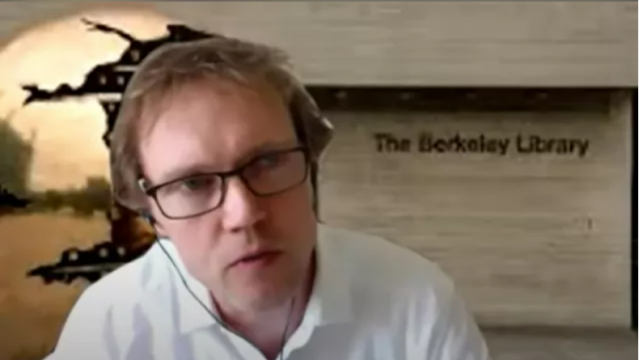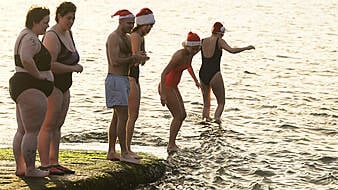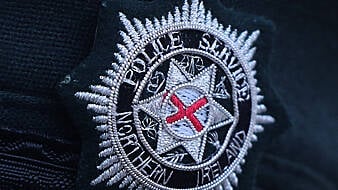Leading barrister and law professor Diarmuid Phelan told gardaí that he was "scared sh**less" when he shot an unarmed trespasser on his farmland in the back of the head, in what is expected his lawyers will argue was self defence, a prosecution barrister has told a murder trial.
Senior counsel Roisin Lacey, for the Director of Public Prosecutions (DPP), also told the jury in her opening address that Mr Phelan told gardaí he became concerned about a dog running loose on his land towards his sheep.
When he got a view of the dog, he shot it with his Winchester rifle, whereupon, he said, three men immediately "exploded" from the woods and began threatening him.
The 12 jurors were also told by the State today that Mr Phelan said he was shaking with fear and "scrambled" up a bank to get away but when the deceased man, Keith Conlon, and a second man kept coming he believed they were "coming to fulfil the threats they had made".
As they got closer, Mr Phelan said he reached for his Smith & Wesson revolver in his pocket and fired in the air over their heads but was "stunned when one man went down", the court heard.
When asked about the distance between himself and the deceased when he fired, Mr Phelan said that if he hadn't reacted immediately, "he would have gotten me".
Terrified
He said he was "terrified, stressed and scared sh**less," Ms Lacey said.
It was during the opening of the trial of Mr Phelan at the Central Criminal Court today that the prosecuting barrister said she expects the defence case to be that the accused was entitled to discharge the firearm in a legitimate act of self defence.
They will say that it was not done with the intention of causing the bullet to penetrate Mr Conlon's body and that the penetration was an accidental, unintended result, she stated.
The State's case, Ms Lacey highlighted, is that when the third shot was fired, the gun was pointed in the direction of the deceased who was shot in the back of the head when he had turned away to leave. "In those circumstances we say the accused intended to kill or cause serious injury," counsel said.
Mr Phelan (56), with an address at Kiltalown Lane, Tallaght, Dublin 24, has pleaded not guilty to murdering Keith Conlon (36) at Hazelgrove Farm, Kiltalown Lane, Tallaght, on February 24th 2022.
Mr Conlon, from Kiltalown Park in Tallaght, was seriously injured in the shooting incident on February 22nd and died at Tallaght University Hospital two days later.
Opening the prosecution’s case today, Ms Lacey said Mr Conlon was shot on February 22nd but his date of death was two days later on February 24th.
Outlining the facts of the case, Ms Lacey said this murder prosecution was related to events that took place in the early afternoon of February 22nd at Hazelgrove Farm in Tallaght, which is in the foothills of the Dublin mountains.
The lawyer said Mr Phelan was the owner of the farmland, which was a working farm and had animals on it.
The prosecution barrister went on to tell the court that Mr Phelan was working on the farm on February 22nd and was accompanied by four "farmhands".
She told the jury they would hear from the four of them and that two of the witnesses were outside the jurisdiction.
The barrister told the jury that they might hear the term "woofers" being used to describe the "farmhands". "I understand its foreigners who come to this jurisdiction, almost like an internship and who want to learn more about working on a farm in exchange for board and lodging," she explained.
Counsel said a river ran through the property, and it was once a golf course before it became a working farm. She said a green area and a bunker area was still visible on the farm and that would be the focus of the prosecution case.
Detailing the evidence that will be heard, Ms Lacey said a dog was heard barking by Mr Phelan and the "woofers" on the morning of February 22nd.
She said nothing was done about it initially and they had all continued working. However, the lawyer said the accused man heard barking again around 1pm and together with one of the woofers they went to a wooded area.
Counsel said the accused went in the direction of where he heard the dog barking and took a Winchester rifle with him. She said at this point three men were also on the accused's property in an area that consisted of trees, undergrowth and a river running through it.
The court will hear evidence, the lawyer said, that Keith Conlon is also known as Keith Green and was also referred to by his nickname 'Bono'. She said the two other men were Callum Coleman and Robin Duggan. She said Mr Coleman is another witness in the trial but Mr Duggan was not.
Counsel said the three men were trespassers and had no permission to be on Mr Phelan's land. She said they were involved in "fox bolting", which involved hunting foxes or badgers.
She added: "The process involves using a small dog, where the dog has an electric tag. The hole is identified where the fox or badger may be, and a dog is sent down to trap the quarry. The dog is located using an electronic tag and the men dig to release the dog and capture the quarry".
The barrister further stated that Mr Coleman had another dog with him, which was his pet dog and it was tied by a leash to a tree. She said the men had been engaged in the process of "fox bolting" for about an hour.
Dog shot
The court heard further evidence will be that the men heard one shot at this point and saw Mr Coleman's dog had been killed.
Ms Lacey said it is the prosecution's case that before the dog was shot, no warning had been issued by Mr Phelan.
Counsel said Mr Coleman and Mr Conlon had seen the accused man and one of the woofers around 15 metres away and that Mr Phelan was carrying a rifle.
She said a "very heated exchange of words" took place after the dog was shot dead and there had been shouting from Mr Coleman and Mr Conlon.
Mr Lacey said the evidence will be that Mr Conlon took out his mobile phone and took a short video of the encounter between himself, the accused and Mr Coleman.
The barrister said Mr Phelan and the woofer retreated back up the ravine to the green area where the other three woofers were.
She said Mr Conlon and Mr Coleman followed them out and emerged from the wooded area a short time later.
The two men came out into the green area where the bunker was and there was still shouting going on about the gardai being called and having the accused charged with shooting the dog, she said.
There will be evidence, Ms Lacey said, that the accused got one of the woofers to phone gardaí and Mr Phelan told the two men that he was on the phone to gardaí.
She said Mr Conlon had taken out his phone and said he was also going to call gardaí.
The court will also hear evidence, the lawyer said, that Mr Phelan was shouting at the two men to go, keep their distance and to "get back".
She said Mr Conlon and Mr Coleman had approached, that Mr Conlon was ahead and the accused had walked towards them.
She also said that the accused had taken a Smith & Wesson revolver out from his jacket pocket. The barrister further stated that neither Mr Conlon nor Mr Coleman had a weapon with them.
"You will hear about the firing of three shots from a Smith & Wesson, they were fired quickly and will hear from the witnesses as to what they saw and will hear what direction the gun was pointed," she added.
Shots fired
The court heard further evidence will be that two of the three shots were fired into the air and the third shot had connected with Mr Conlon, she said. Ms Lacey said the prosecution case was that Mr Conlon had turned away from the accused at the time he was shot in the back of the head.
Counsel said the court will hear from the State pathologist that the entry wound of the third bullet was 3cm behind Mr Conlon's right ear and 5cm above that.
Ms Lacey said the evidence will be that Mr Conlon instantly fell to the ground into the area where the old bunker from the golf course was. She said the deceased had fallen face forward and despite the shot to the head was able to turn onto his back.
Evidence will be that Mr Coleman saw what happened and immediately ran away. She said the jury would hear the three 999 calls made to emergency services. The first of the 999 calls was made by the accused after shooting the dog, she said, where Mr Phelan told gardaí about having shot the dog and intruders being on his land.
Ms Lacey said the court will hear that first responders came to the scene very quickly and had met Mr Phelan on the driveway of the property.
The accused brought them to Mr Conlon, who was alive but in a critical condition, she said. Mr Conlon was treated by the accused and responding gardaí using blood clotting powder.
Counsel said Mr Phelan informed gardaí at the scene that he had shot Mr Conlon and when he was asked where the gun was, the accused took it from his jacket pocket and threw it on the ground.
Mr Conlon was brought to Tallaght Hospital and placed on life support. Two days later, he was confirmed brain-dead and declared dead at 3.15pm on February 24th. Ms Lacey said the deceased had a fracture to his left shoulder which was consistent with him having fallen after being shot.
Firearms used
She said the deceased had sustained a single gunshot wound to the back of the head, the bullet had gone through the brain but had not exited the skull. The cause of death was a gunshot wound to the head.
The court will also hear evidence, the lawyer said, that two firearms had been discharged that day. She said the revolver was loaded with eight rounds, three had been discharged, and the five remaining ones were of .22 long rifle ammunition.
The court will also hear, the barrister indicated, that the bullet removed from Mr Conlon's head was the same ammunition of the five undischarged rounds and it had come from that firearm. The two other rounds that were discharged were never recovered, she said.
Mr Phelan was arrested at 1.45pm at the scene and taken to Tallaght Garda Station where he was detained and interviewed.
Ms Lacey said the accused man told gardaí during interviews that he had previously had trespassers with dogs on his land and when he put up fences they were broken down. He was concerned about lambing ewes at the other end of the farm.
He said he was working that afternoon when his farm hands told him they had heard a dog barking so he went to a wooded area and looked to see if anyone was there. He raised his voice but received no reply.
He said he then saw a dog running loose in the woods going towards his sheep. He could see enough to shoot it but, he said, when he fired three men "exploded" from the woods and began threatening him.
"They only had to get me once," he said, adding that he felt he had to "get out of there as quickly as possible".
He described scrambling up the bank, shaking with fear before arriving back where the farm hands were waiting. He told them to call gardaí.
Ms Lacey said the accused told gardaí he was then alerted to the "Travellers coming towards us". Neither Mr Conlon nor his friend are Travellers, Ms Lacey said.
Counsel said the accused man told gardaí the men were "saying stuff about the dog" and he thought they were "coming to fulfil the threats they had made".
As they got closer, he said he reached for his Smith & Wesson revolver in his pocket and fired in the air over their heads and to the left and right. He said he was "stunned when one man went down".
He further told gardaí that he thought the first three shots in the revolver were birdshot but that he "must have been wrong". He had loaded the revolver himself but couldn't recall when and he had it for "vermin control", he said.
When asked about the distance between himself and the deceased when he fired, he said that if he hadn't reacted immediately, "he would have gotten me". He said he was "terrified, stressed and scared shitless," Ms Lacey said.
Ms Lacey said she expects the defence case to be that Mr Phelan was entitled to discharge the firearm in the way he did in what they will say was a legitimate act of self-defence.
They will say that it was not done with the intention of causing the bullet to penetrate Mr Conlon's body and that the penetration was an accidental, unintended result.
Ms Lacey said the defence will say that factors contributing to the accident include the inaccuracy and light weight of the weapon, the repeated firing and the heavy trigger pull combined with fear, stress and the movement of the deceased.
The State's case, Ms Lacey said, is that when the third shot was fired, the gun was pointed in the direction of the deceased who was shot in the back of the head when he had turned away to leave. "In those circumstances we say the accused intended to kill or cause serious injury," Ms Lacey said.
The trial continues tomorrow before Ms Justice Siobhan Lankford and a jury of nine men and three women. It is expected to last six weeks.







